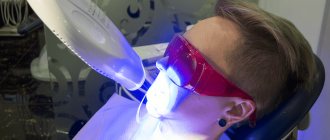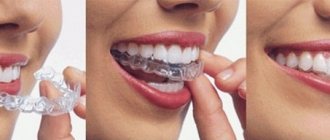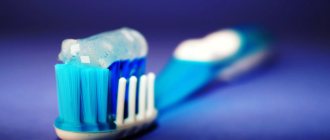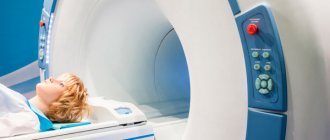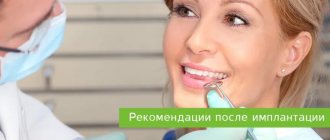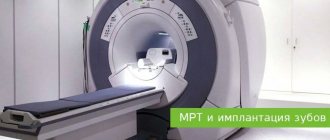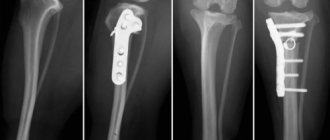What is Air Flow cleaning and how is it done?
Air Flow teeth cleaning is an effective dental procedure that allows you to remove bacterial and pigmented plaque, soft and hard deposits from the surface of your teeth. To achieve the desired result, a special device “Air Flow” (made in Sweden) is used, which gave the name to the procedure.
The Air Flow device creates a directed flow of air, water and fine abrasive particles. Applied to the surface of the teeth under high pressure, it delicately removes (cleanses) visible plaque and deposits from the surface of the teeth. As a rule, sodium bicarbonate is used as an abrasive - ordinary soda.
Teeth cleaning using the Air Flow system is carried out only in a dental setting and includes several stages.
- Treating lips with Vaseline.
- Position of the saliva ejector in the patient's mouth.
- The placement of a device in the mouth to collect excess flow of water, air and fine particles.
- Treatment of each tooth with a high-pressure stream at an angle of 30 - 600.
- Grinding of teeth using leveling paste.
- Treatment of teeth with a special fluoride-based gel to strengthen tooth enamel and reduce its sensitivity.
During treatment with a directed flow, special attention is paid to hard-to-reach places - interdental spaces, periodontal pockets. Unable to be cleaned during daily oral hygiene, they contain large amounts of plaque and deposits. But thanks to the penetrating power of Air Flow, they can be removed without much difficulty.
The total duration of the procedure is from 40 minutes to 1 hour, which depends on the condition of the teeth and the complexity of the problem.
Teeth cleaning with Air Flow equipment: what it is, application, what cleaning gives - MEDSI
Table of contents
- Basics of the method
- When is Air Flow cleaning needed?
- How to clean with the Air Flow system
- Advantages and disadvantages of Air Flow
- Contraindications to the procedure
- Advantages of carrying out the procedure at MEDSI
The Air Flow device is a device that is used for professional, gentle cleaning of teeth from plaque and various deposits.
Basics of the method
Air Flow hygienic teeth cleaning is a procedure in which the device sprays a mixture of water, air and special powder crystals under pressure onto the teeth. The degree of such pressure is regulated by the dentist. Using this device, various types of deposits are removed not only from the surface of the teeth, but also from the interdental spaces.
This is a safe and painless method of professional cleaning that does not damage the enamel. After using it, teeth become lighter. For greater patient comfort, fruit-flavored powder is used.
When is Air Flow cleaning needed?
Air Flow oral cleaning is necessary in situations where you need to clean hard-to-reach areas of the jaws, gums and teeth, as well as before various types of medical interventions.
Therefore, removing dental plaque using the Air Flow method is necessary in the following cases:
- The need to install or remove crowns, implants or braces
- The appearance of gum problems - the first signs of periodontal disease
- It is necessary to properly clean installed implants, braces, etc.
- Yellowing of enamel due to drinks and other substances (tea, coffee, cigarettes, etc.)
- The teeth are located very tightly, there is crowding of the dentition
As a result of the procedure, it is possible not only to completely clean the implants or braces, but also to avoid the development of oral diseases such as caries, periodontitis, periodontal disease, periostitis, gingivitis and others.
How to clean with the Air Flow system
Since Air Flow cannot remove extremely hard particles of old tartar, it is used in combination with other methods of cleaning and polishing teeth. All of them are included in the list of procedures used for professional cleaning by a dentist.
The standard comprehensive procedure goes like this:
- Before brushing, the patient must brush his teeth
- At the beginning of the session, the doctor assesses the condition of the patient’s jaw, gums and oral cavity
- Then he removes hard plaque and stone not only from the teeth, but also from under the gums using an ultrasonic device - a scaler; This part of the procedure may be painful for the patient, so they may be asked to apply local anesthesia
- The third stage of cleaning is the removal of pigmented plaque formed from eating food, drinks, smoking, using the Air Flow system
- After this, the doctor cleans the interdental spaces using floss (dental floss) or strip (abrasive tape)
- At the end of the procedure, the surface of the teeth is polished with special brushes, and fluoride-containing compounds are also applied to them to strengthen the enamel and reduce sensitivity.
After professional cleaning of the patient’s chewing apparatus using the Air Flow system, MEDSI dentists provide recommendations on gum care, from choosing a brush and irrigators to individual selection of toothpaste. Doctors advise repeating the procedure at least 1-2 times a year.
Advantages and disadvantages of Air Flow
Advantages of the method of cleaning teeth using this device:
- Dentures, braces and other orthodontic structures are completely cleaned, which is impossible to achieve with conventional methods
- The device allows you to maximally clean hard-to-reach subgingival and supragingival areas from plaque
- The procedure takes about half an hour
- Using Air Flow does not cause discomfort or pain
- The enamel is brightened, pigment spots are eliminated
- This cleaning helps eliminate bad breath (if it is not caused by other diseases)
Minuses:
- The Air Flow device is not able to independently remove old dense tartar
Contraindications to the procedure
Hygienic teeth cleaning using Air Flow cannot be carried out if:
- allergies to soda or components of polishing mixtures
- colds, flu and other viral diseases
Advantages of carrying out the procedure at MEDSI
- Modern systems for professional teeth cleaning, suitable even for sensitive gums
- Highly qualified dentists
- Wide network of clinics and convenient opening hours
You can sign up for the procedure at any time by calling 8 (495) 7-800-500
Cleaning with braces
Quite often, treatment with braces makes it difficult to thoroughly clean teeth. As a result, plaque and deposits can accumulate around orthodontic structures, for which the Air Flow system is ideal for removing. A targeted fine stream will gently clean the surface of the teeth and help maintain the necessary oral hygiene during orthodontic treatment.
The appearance of bacterial and pigment plaque, soft and dense deposits inevitably leads to the development of caries. Its progression provokes the appearance of such serious dental diseases as periodontitis and pulpitis - in this case, tooth loss is inevitable. Professional teeth cleaning using the modern Air Flow device helps stop the development of possible complications.
Indications for the procedure
Professional oral hygiene using a sandblasting machine is recommended in the following cases:
- Visible darkening of the enamel color.
- The presence of pigment plaque and deposits on the surface of the teeth.
- Smoker's plaque
- Accumulation of plaque and deposits in the interdental space and periodontal pockets.
- The presence of braces, bridges and other dental structures that make hygienic cleaning of the oral cavity difficult.
- Upcoming procedure for dentures or teeth whitening.
Important to remember! The use of Air Flow is advisable for aesthetic, therapeutic and preventive purposes. Removing dental plaque will help restore your teeth to an attractive appearance and prevent the development of caries and serious dental diseases.
Indications for professional cleaning
In a dental clinic, a doctor may recommend teeth cleaning using the Air Flow method in the following cases:
- the presence of extensive yellow plaque and multiple stones;
- continuous dentition (crowding), making hygienic care difficult;
- spots and darkening on tooth enamel;
- orthodontic treatment;
- as a preparatory procedure before installing implants and prostheses, braces;
- the need to wash installed braces, crowns and other orthodontic devices;
- prevention of caries, periodontal disease and other diseases;
- as part of a complex treatment of teeth for the purpose of whitening them.
This hygienic treatment is carried out not only for adults, but also for children over 12 years of age (if indicated).
Contraindications
Removing plaque and deposits using the Air Flow device is considered a minimally invasive procedure that is well tolerated by the human body and does not harm its health. And only in rare cases is the procedure impossible. The following conditions and pathologies are such contraindications.
- The patient has not reached 15 years of age.
- Following a salt-free diet.
- Chronic respiratory diseases.
- Increased sensitivity of tooth enamel.
- Individual allergic reactions to the manipulations performed or the composition of the abrasive powder for cleaning.
- Pregnancy period.
Important to remember! Professional cleaning of the oral cavity with Air Flow is carried out only after prior consultation with a dentist. In case of chronic diseases, consultation with your doctor is necessary.
How is Air Flow different from ultrasonic cleaning?
The effectiveness of the Air Flow technique is based on the abrasive properties of a fine flow that cleans the surface of the teeth. While the success of ultrasonic teeth cleaning is built on the ability of ultrasonic waves to destroy plaque, deposits and tartar due to a certain vibration frequency. Both methods are classified as mechanical teeth cleaning and are recommended for maintaining oral health.
In order to understand the difference between Air Flow and ultrasonic cleaning, let's look at the main advantages and disadvantages of these methods.
Benefits of Air Flow
- Minimally invasive.
- Removal of pigment, bacterial plaque and soft deposits.
- Ability to clean hard-to-reach places.
- Effective cleaning of teeth with braces, bridges and implants.
Flaws
- The method is not recommended for hypersensitive teeth.
- Air Flow will not remove tartar.
Benefits of ultrasonic cleaning
- Minimally invasive.
- Removal of pigment and bacterial plaque.
- Removal of soft and hard deposits.
- Tartar removal.
- Ability to clean hard-to-reach places.
Flaws
- The impossibility of using ultrasound in the presence of braces, implants and other dental structures.
Thus, Air Flow can be compared to “thorough cleaning”, and the use of ultrasound to “spring cleaning” in the oral cavity. Both methods differ not only in the method of exposure, but also in the depth of cleaning.
20% discount on prof. hygiene
Moscow
What's better?
Ideally, it is necessary to combine ultrasonic cleaning with the Air Flow procedure. The first will destroy hard deposits and tartar, which is especially important for hard-to-reach places, and the finely dispersed flow will delicately remove soft deposits and plaque.
Which is better is a difficult question. It all depends on the complexity of the problem, the individual characteristics of the enamel and the presence of contraindications. Therefore, an accurate answer can only be given after diagnosing the general condition of the oral cavity.
Note! The Air Flow procedure and ultrasonic cleaning are not teeth whitening. During these procedures, only slight whitening of the enamel is possible, by 1–2 tones, which is achieved by removing visible pigment plaque.
Advantages and disadvantages
Like every dental procedure, Air Flow cleaning has both pros and cons, and every patient should be aware of them and take them into account.
The undoubted advantages of the method include the following points:
- cleaning teeth and subgingival pockets;
- along with the removal of deposits, pathogenic bacteria are destroyed, which is an excellent prevention of dental problems;
- removes bad breath;
- the procedure is painless, and in case of increased sensitivity, the dentist offers local anesthesia;
- nothing chemical, the treatment is carried out with a natural substance - soda, to which allergic reactions practically do not occur;
- the manipulation is carried out in one visit to the doctor and takes no more than 30 minutes;
- tooth enamel without layers and stone acquires its natural whiteness;
- small, compared to other methods, the cost of the procedure.
Despite all the obvious advantages of Air Flow, the disadvantages of the method include the following points:
- if there are old tartar, the air flow may not cope with the task, then other cleaning methods should be used;
- those expecting a snow-white smile may be disappointed, since removing the stone lightens the enamel by no more than 1-2 tones;
- a soda solution upon contact with the mucous membrane can cause a burning sensation, discomfort in the mouth, and if the composition is swallowed, an upset stomach;
- cleaning can be done no more than 2 times a year;
- There are medical contraindications to its use.
Air Flow during pregnancy
Pregnancy is a relative contraindication to the procedure. The problem is that during this period, calcium metabolism in a woman’s body is disrupted. As a result, tooth enamel loses its protective functions, becomes more sensitive, and brushing can cause it to thin out, which can trigger the development of dental diseases. Therefore, the Air Flow procedure is not recommended for pregnant women.
Recommendations after cleaning
When treating teeth with soda solution, teeth become sensitive. In order for the positive results of the Air Flow procedure to last as long as possible, doctors recommend following the following simple rules:
- after the manipulation, you should not eat food for two hours;
- afterwards you can eat soft foods so as not to injure your gums;
- Regular teeth brushing should be postponed for one day;
- for about 3 hours you should not smoke or drink drinks with dyes (coffee, tea, etc.);
- replace your old toothbrush with a new one.
To avoid bleeding gums, you can use a rinse based on chamomile or sage.
Recommendations after the procedure
For the first time after professional Air Flow cleaning, you should limit the consumption of excessively cold, hot, sweet, spicy and other irritating foods. In this case, the positive result achieved during the procedure will be noticeable immediately. To maintain it for a long time, you must adhere to the following recommendations.
- Use medicated toothpaste and a soft-bristled brush for daily oral hygiene.
- To thoroughly clean teeth and hard-to-reach places, regularly use rinses, flosses, and brushes.
- Repeat the procedure at least once a year.
In this case, it is necessary to regularly, once every 6 months, undergo a preventive examination by a dentist.
How is the procedure done?
The procedure lasts about 30 minutes. During this time, the doctor prepares the patient and the equipment - gives the person protective glasses and a cap, installs special devices for isolating the gums and mucous membranes, connects a dental vacuum cleaner and saliva ejector.
The doctor treats each tooth, making circular movements near the enamel, but without touching it. In this case, the doctor can regulate the strength of the flow of compressed air and abrasive particles, and the angle of inclination of the hardware tip in relation to the surface being treated. The jet is directed at the tooth, but not at the gum tissue. Stone particles, as well as residual cleaning solution, are removed using special dental equipment.
The last stage consists of polishing the teeth with a special brush with an abrasive paste, which makes the surface perfectly even and smooth. Additionally, a protective varnish with fluorine is applied to strengthen the enamel.
Usually the patient does not experience any unpleasant or painful sensations, but if any discomfort occurs, the dentist may apply local anesthesia.
What's not allowed?
After thoroughly cleaning your teeth, you should reconsider your diet and bad habits. The following list should be banned.
- Eating excessively hard foods.
- Abuse of products with a high content of coloring substances (both natural and artificial).
- Eating foods high in acids.
- Tea, coffee, chocolate, red wine.
- Cigarettes.
If you don’t want to give up this list, then you need to be prepared for the fact that very soon a new pigmented plaque will form on the surface of the tooth enamel, and it will become more sensitive.
The first time after the procedure, there may be unpleasant painful symptoms, increased sensitivity of the teeth and slight bleeding of the gums. If you follow all the dentist’s recommendations, they disappear after 1 – 2 days.
Cost of the procedure
The average cost of the procedure is 5,000 rubles. The price of the service is determined based on the complexity of the problem with which the patient came to the dentist, the total volume of dental work and the price segment of the clinic. Quite often there are hot discounts on the Air Flow procedure.
Author: Elena Kopylova Dentist-therapist, endodontist. Work experience more than 8 years.
The information is for reference only. Before treatment, consultation with a doctor is necessary.
